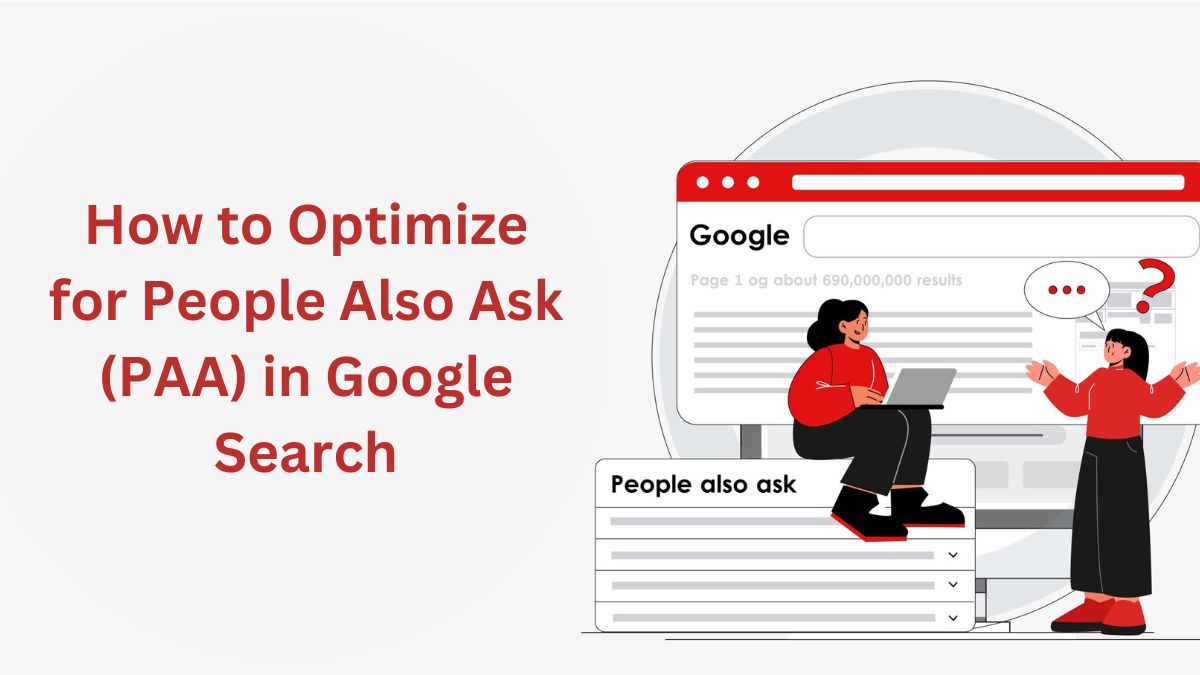
The “People Also Ask” (PAA) feature on Google Search has grown significantly in prominence and importance in recent years. Appearing as a dynamic box containing related questions linked to a user’s search query, PAA offers a treasure trove of opportunities for SEO professionals and content creators. Optimizing for PAA can enhance your website’s visibility, attract more organic traffic, and position your brand as an authoritative source of information.
This blog post delves into what PAA is, why it matters, and how to effectively optimize your content for this feature.
What Is “People Also Ask”?
The PAA box is a search engine result page (SERP) feature displaying a list of questions related to the user’s original query. Each question can be expanded to reveal a brief answer, often extracted from a webpage, along with a link to the source.
Key Features of PAA:
-
Dynamic Nature: The list of questions expands as users click on them, often generating additional related questions.
-
Placement: PAA boxes can appear anywhere on the SERP, often near the top, below the featured snippet.
-
Diverse Formats: Answers can include text, lists, images, or even videos.
-
Device Agnosticism: PAA boxes are prominent on both desktop and mobile search results.
Why Optimize for PAA?
-
Increased Visibility: Securing a spot in the PAA box boosts your exposure, often landing your content near the top of the SERP.
-
Traffic Generation: PAA links back to your website, providing an opportunity for users to visit your page for more detailed information.
-
Authority Building: Being featured in PAA establishes your brand as a credible and trustworthy source.
-
Voice Search Compatibility: PAA answers are frequently used by Google Assistant and other voice search devices, expanding your reach.
Strategies to Optimize for PAA
1. Understand Your Audience’s Questions
Tools to Discover Questions:
-
Google Search: Start typing a query and note the auto-suggestions.
-
Answer the Public: Generates a comprehensive list of questions based on your keyword.
-
Quora and Reddit: Explore popular threads to uncover commonly asked questions.
By understanding the questions your audience is asking, you can tailor your content to match their queries directly.
2. Target Long-Tail Keywords
PAA questions often reflect long-tail keywords because these mimic natural, conversational language. Incorporate these keywords into your content titles, headings, and body text to align with potential PAA queries.
Example:
-
Instead of targeting “SEO optimization,” aim for “How to optimize SEO for small businesses.”
3. Structure Content for Scannability
Google favors content that is clear, concise, and well-structured. To improve your chances of appearing in PAA:
-
Use subheadings (H2, H3) to break down your content into logical sections.
-
Incorporate bullet points or numbered lists for direct answers.
-
Write short, focused paragraphs to address specific questions.
Example:
Question: What are the benefits of content marketing? Answer: Content marketing offers several benefits, including:
-
Increased brand awareness.
-
Better audience engagement.
-
Higher search engine rankings.
4. Directly Answer the Question
Google extracts direct and succinct answers for PAA. Place your answer within the first 40-60 words of a section before elaborating further.
Example:
Question: How does keyword research improve SEO? Answer: Keyword research improves SEO by identifying terms your target audience uses, allowing you to create content that aligns with their search intent.
Follow up with a detailed explanation in the remaining section.
5. Leverage Schema Markup
Schema markup helps search engines understand your content better. Use structured data, such as FAQ Schema, to improve your chances of appearing in PAA or other SERP features.
Tools for Schema Markup:
-
Google’s Structured Data Markup Helper.
-
Plugins like Yoast SEO for WordPress.
6. Analyze Competitor PAA Results
Review the questions currently featured in PAA for your target keywords. Evaluate the answers provided and identify opportunities to create more comprehensive or updated content.
Steps:
-
Search your target keyword on Google.
-
Expand the PAA questions.
-
Analyze the structure and content of the answers.
7. Optimize for Mobile Search
Since PAA is highly prominent on mobile SERPs, ensure your website is mobile-friendly:
-
Use a responsive design.
-
Optimize page load times.
-
Ensure buttons and links are easy to click on smaller screens.
8. Create Video Content
Google often features video snippets in PAA answers. To optimize your videos:
-
Create short, concise videos addressing specific questions.
-
Use descriptive titles and tags.
-
Include a transcript to boost SEO.
Monitoring and Measuring Success
To gauge the effectiveness of your PAA optimization efforts, track the following metrics:
-
Search Console Data: Monitor impressions and clicks from PAA.
-
Click-Through Rates (CTR): Higher CTRs indicate engaging content.
-
Bounce Rates: Ensure visitors find your content valuable by minimizing bounces.
Example: Optimizing for a PAA Query
Keyword: “Best time to post on Instagram”
Potential PAA Question:
“What is the ideal time to post on Instagram for engagement?”
Content Structure:
Answer: The best time to post on Instagram depends on your audience’s activity. Generally, studies suggest posting between 9 AM and 11 AM on weekdays yields high engagement.
Elaboration: You can determine the optimal time for your specific audience by analyzing Instagram Insights, which provides data on when your followers are most active.
Additional Tips:
-
Add a visual chart showcasing the best posting times.
-
Incorporate examples or case studies to strengthen credibility.
Emerging Trends in PAA Optimization
1. AI-Powered Search Features
As AI shapes Google’s search algorithms, understanding conversational search intent will become even more critical.
2. Voice Search and PAA
Voice assistants often pull answers directly from PAA results, making conversational and concise content more valuable.
3. Localization of PAA
Localized queries like “best coffee shops near me” are becoming common in PAA. Focus on local SEO to capture this traffic.
Conclusion
Optimizing for “People Also Ask” is an indispensable strategy for improving visibility, traffic, and authority in 2024. By understanding user intent, creating structured and engaging content, and leveraging tools like schema markup, you can position your content as a reliable source that satisfies both search engines and users.
As search trends evolve, staying ahead with optimized content will ensure your website remains a top contender in SERP rankings and captures the ever-growing opportunities presented by PAA.




